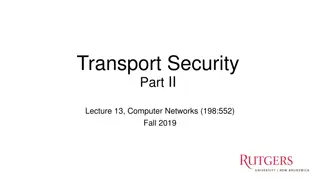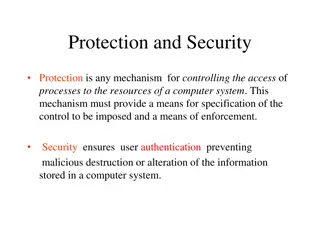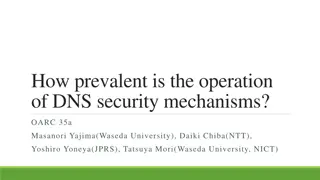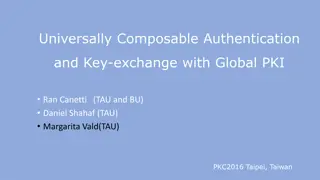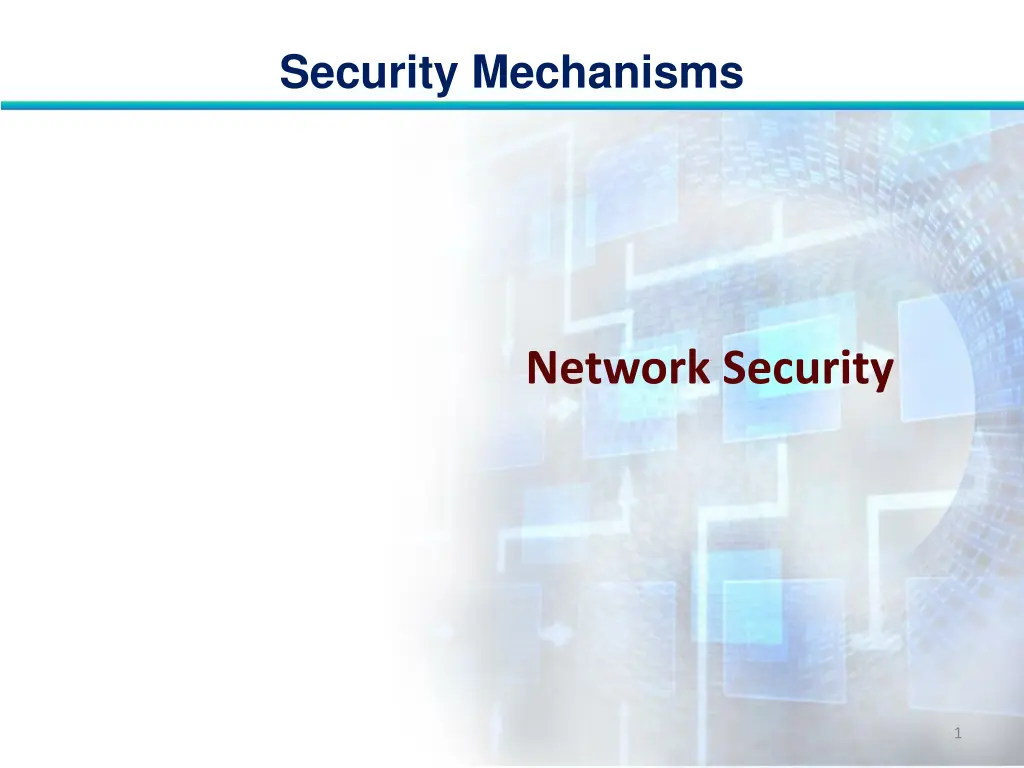
Exploring Security Mechanisms: Objectives and Implementation Categories
"Discover the world of security mechanisms with this comprehensive guide covering objectives, implementation categories, encryption, digital signatures, access control, authentication, and traffic padding. Learn how these mechanisms enhance network security and data integrity." (412 characters)
Download Presentation

Please find below an Image/Link to download the presentation.
The content on the website is provided AS IS for your information and personal use only. It may not be sold, licensed, or shared on other websites without obtaining consent from the author. If you encounter any issues during the download, it is possible that the publisher has removed the file from their server.
You are allowed to download the files provided on this website for personal or commercial use, subject to the condition that they are used lawfully. All files are the property of their respective owners.
The content on the website is provided AS IS for your information and personal use only. It may not be sold, licensed, or shared on other websites without obtaining consent from the author.
E N D
Presentation Transcript
Security Mechanisms Network Security 1
Security Mechanisms Objectives of the Topic After completing this topic, a student will be able to describe security mechanisms. 2
Security Mechanisms Figures and material in this topic have been adapted from Network Security Essentials: Applications and Standards , 2014, by William Stallings. 3
Security Mechanisms Security mechanisms defined by X.800, Security Architecture for OSI can be divided into two broad categories w.r.t their implementation. 4
Security Mechanisms A) Specific Security Mechanisms May be incorporated into the appropriate protocol layer in order to provide some of the OSI security services 5
Security Mechanisms Encipherment Use of mathematical algorithms to transform data into a form that is not readily intelligible. The transformation and subsequent recovery depend on the algorithm and encryption keys. 6
Security Mechanisms Digital Signature Data appended to, or a cryptographic transformation of, a data unit that allows a recipient of the data unit to prove the source and integrity of the data unit and protect against forgery. 7
Security Mechanisms Access Control A variety of mechanisms that enforce access rights to resources. Data Integrity A variety of mechanisms used to assure the integrity of a data unit or stream of data units. 8
Security Mechanisms Authentication Exchange A mechanism intended to ensure the identity of an entity by means of information exchange. 9
Security Mechanisms Traffic Padding The insertion of bits into gaps in a data stream to frustrate traffic analysis attempts. 10
Security Mechanisms Routing Control Enables selection of particular physically secure routes for certain data and allows routing changes, especially when a breach of security is suspected. 11
Security Mechanisms Notarization The use of a trusted third party to assure certain properties of a data exchange. 12
Security Mechanisms B) Pervasive Security Mechanisms Mechanisms that are not specific to any particular OSI security service or protocol layer. 13
Security Mechanisms Trusted Functionality That which is perceived to be correct with respect to some criteria (e.g., as established by a security policy). 14
Security Mechanisms Security Label The marking bound to a resource (which may be a data unit) that names or designates the security attributes of that resource. 15
Security Mechanisms Event Detection Detection of security- relevant events. 16
Security Mechanisms Security Audit Trail Data collected and potentially used to facilitate a security audit, which is an independent review and examination of system records and activities. 17
Security Mechanisms Security Recovery Deals with requests from mechanisms, such as event handling and management functions, and takes recovery actions 18
Security Mechanisms Relationship 19








